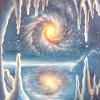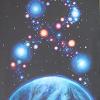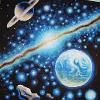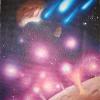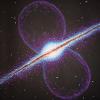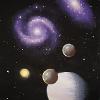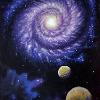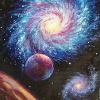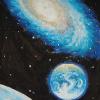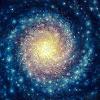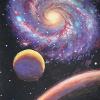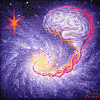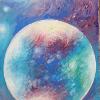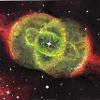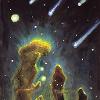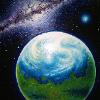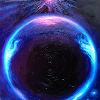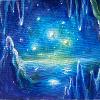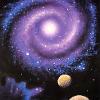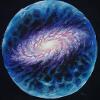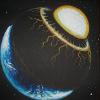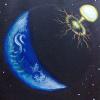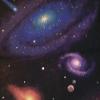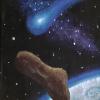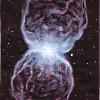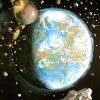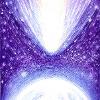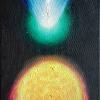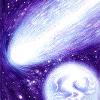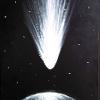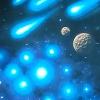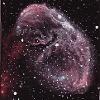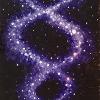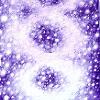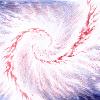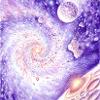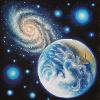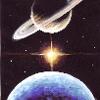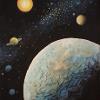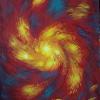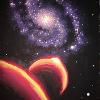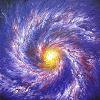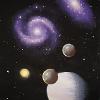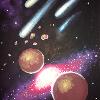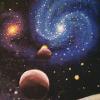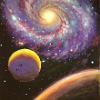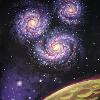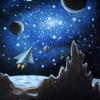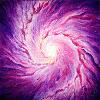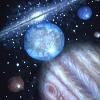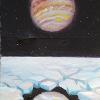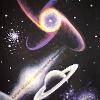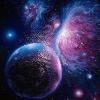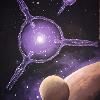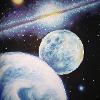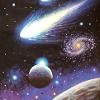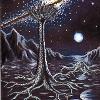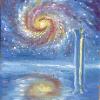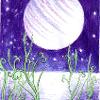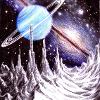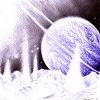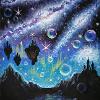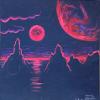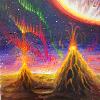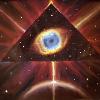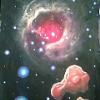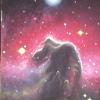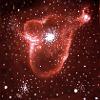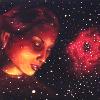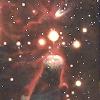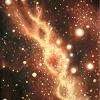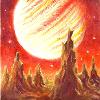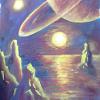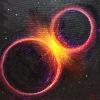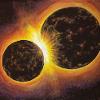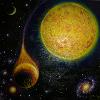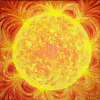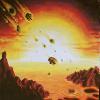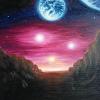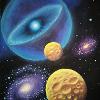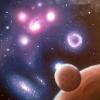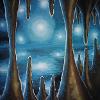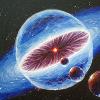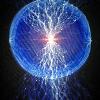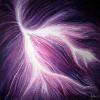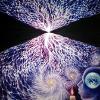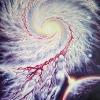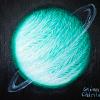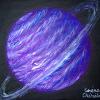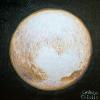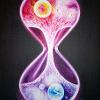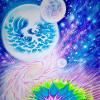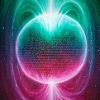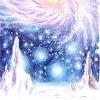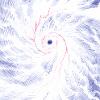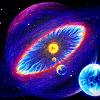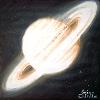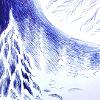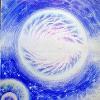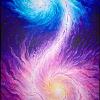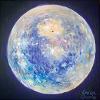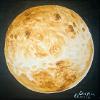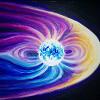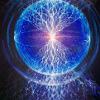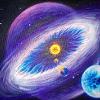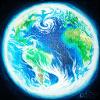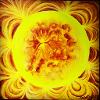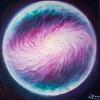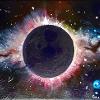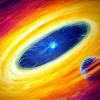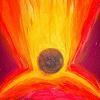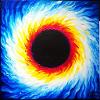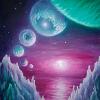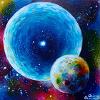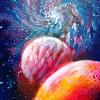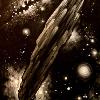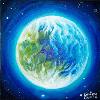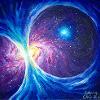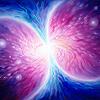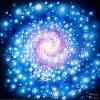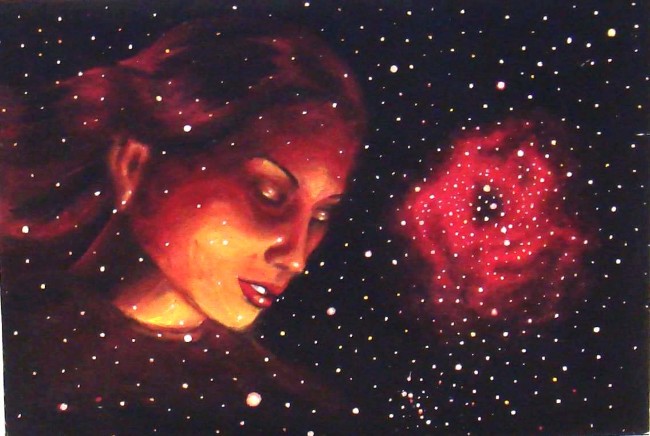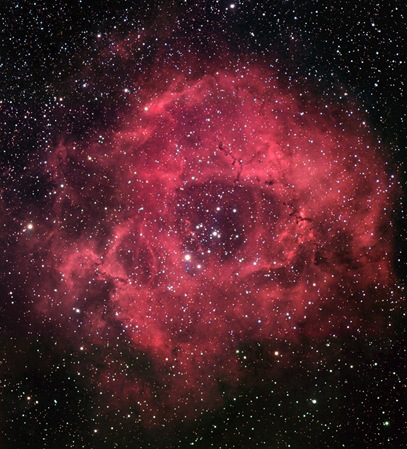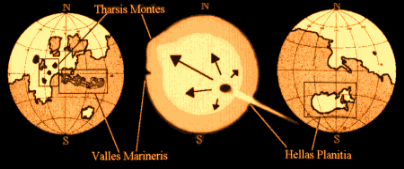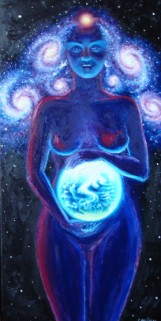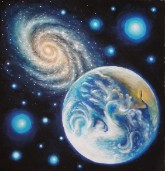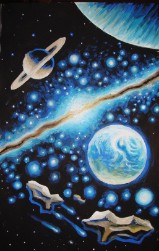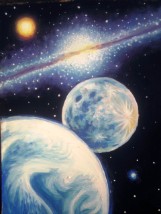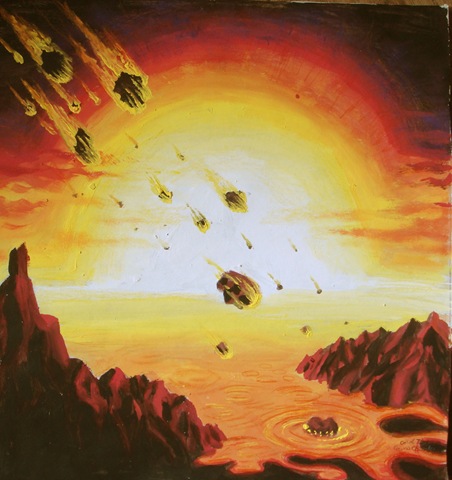
Corot-7b is the first planet orbiting the star Corot-7, a yellow dwarf star in the Monoceros(Unicorn) constellation. The distance between the planet and the the Corot 7 star is 2,500000 km. Like our moon Corot-7b has no rotation movement, exposing to the star the same face. On the surface exposed to the star there is an ocean of lava where the temperatures reach 2400ºC while the other face of the planet is frozen with temperatures that can reach -200ºC. The high temperatures of the lava ocean make the rocks volatilize and then when they reach the cold areas in the upper atmosphere become solid again and fall back in the hot ocean as a stones rain.
This is the way I imagine a place on the borderline area between the hot lava ocean and the dark and cold side of the planet.
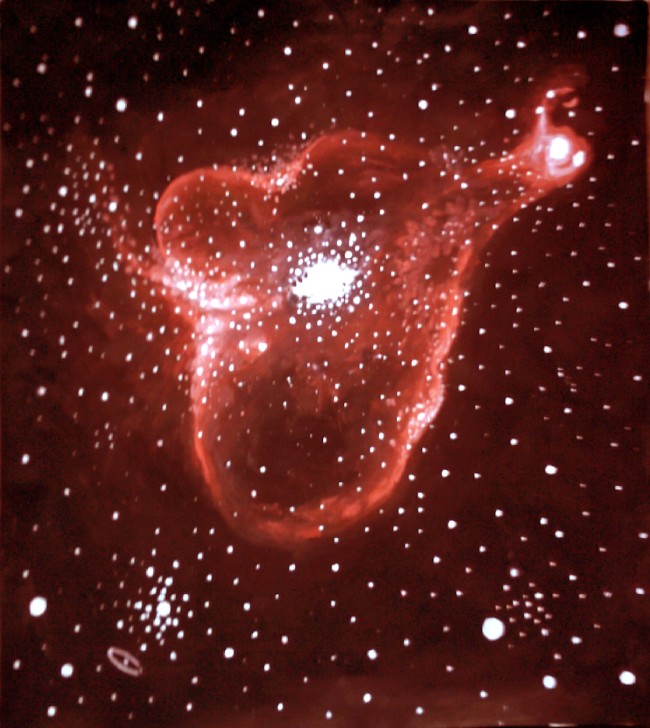
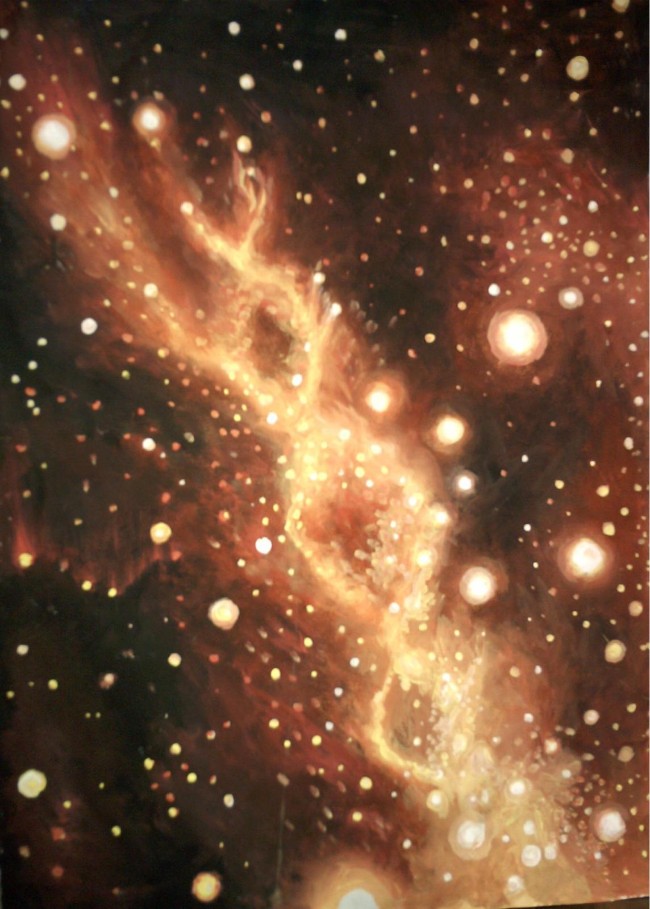
This is my painting of the DNA(Double helix) nebula
The Double Helix Nebula is a gaseous nebula near the center of our galaxy, which is thought to have been distorted by magnetic torsion into the shape of two connected spirals, known popularly as a double helix, akin to the shape of DNA.
The nebula was discovered by the Spitzer Space Telescope. The segment seen so far is thought to be 80 light years long, 300 light years from the supermassive black hole thought to be at the galaxy's center, and 25,000 light years from Earth.
This nebula is seen as circumstantial evidence that the magnetic fields at the center of the galaxy are extremely strong, more than 1,000 times stronger than those of the Sun. If so, they may be driven by the massive disc of gas orbiting the black hole.
The Double Helix Nebula should not be confused with the Helix Nebula, a planetary nebula only 650 light years from Earth
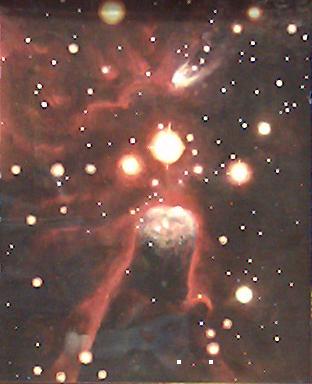
The Cone Nebula (also known as NGC 2264) is an H II region in the constellation of Monoceros. It was discovered by William Herschel in 1785. The nebula is located about 800 parsecs or 2,600 light-years away from Earth.
The Cone Nebula is part of the nebulosity surrounding the Christmas Tree Cluster. The designation of NGC 2264 in the New General Catalogue refers to both objects and not the nebula alone.
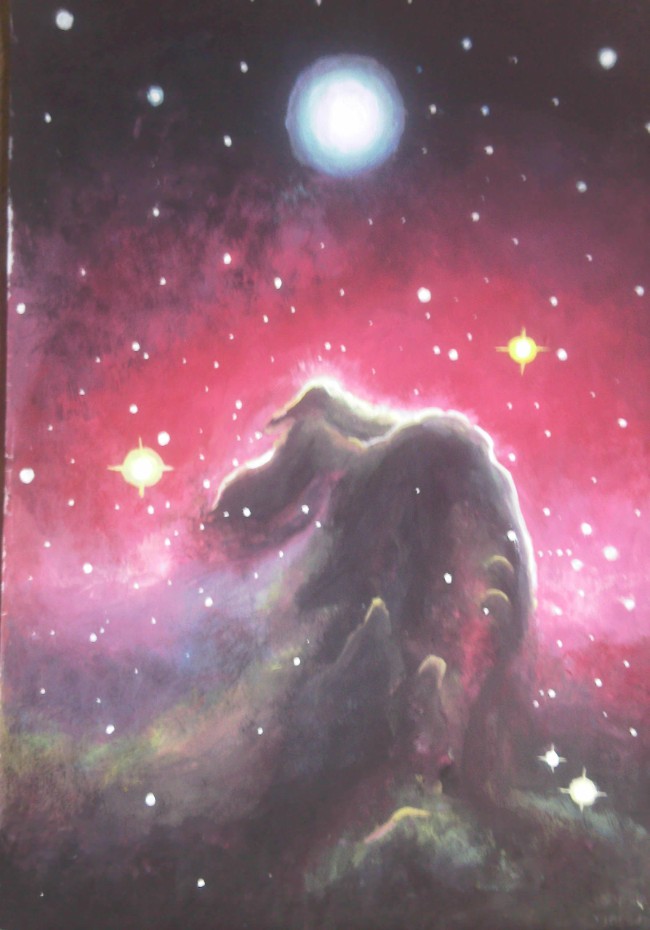
The Horsehead Nebula (also known as Barnard 33 or IC 434) is a dark nebula in the Orion constellation. The nebula is located just below Alnitak, the easternmost star of Orion's Belt, and is part of the much larger Orion Molecular Cloud Complex. It is approximately 1,500 light years from Earth, and is approximately 3.5 light years wide.
One of the most identifiable nebulae in the sky, it is part of a swirling cloud of dark dust and gases, shaped like a horse's head (hence its name). Also known as Barnard 33, the unusual shape was first discovered in 1888 on a photographic plate taken at the Harvard College Observatory.
The red glow originates from hydrogen gas predominantly behind the nebula, ionized by the nearby bright star Sigma Orionis. The darkness of the Horsehead is caused mostly by thick dust, although the lower part of the Horsehead's neck casts a shadow to the left. Streams of gas leaving the nebula are funneled by a strong magnetic field. Bright spots in the Horsehead Nebula's base are young stars just in the process of forming.
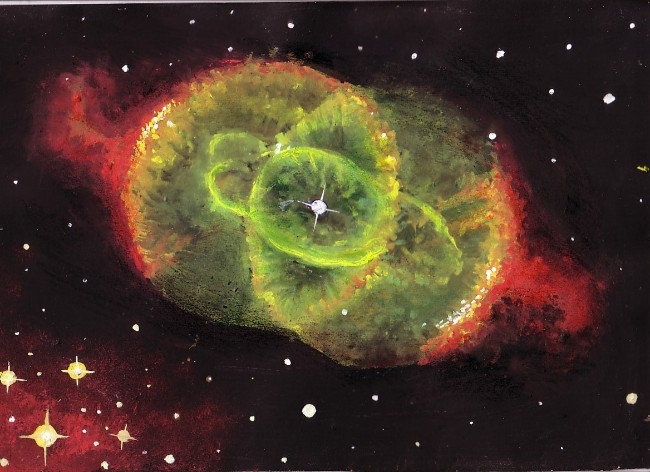
Cat's Eye Nebula(NGC 6543) is a planetary nebula in the constellation of Draco. Structurally, it is one of the most complex nebulae known.
It was discovered by William Herschel on February 15, 1786, and was the first planetary nebula whose spectrum was investigated, by the English amateur astronomer William Huggins in 1864.
Modern studies reveal several mysteries. The intricacy of the structure may be caused in part by material ejected from a binary central star, but as yet there is no direct evidence that the central star has a companion. Also, measurements of chemical abundances reveal a large discrepancy between measurements done by two different methods, the cause of which is uncertain.
I painted this nebula be cause I liked it's aspect.
This nebula is a verry beautiful space object
Minkowski's butterfly, oil on canvas painting
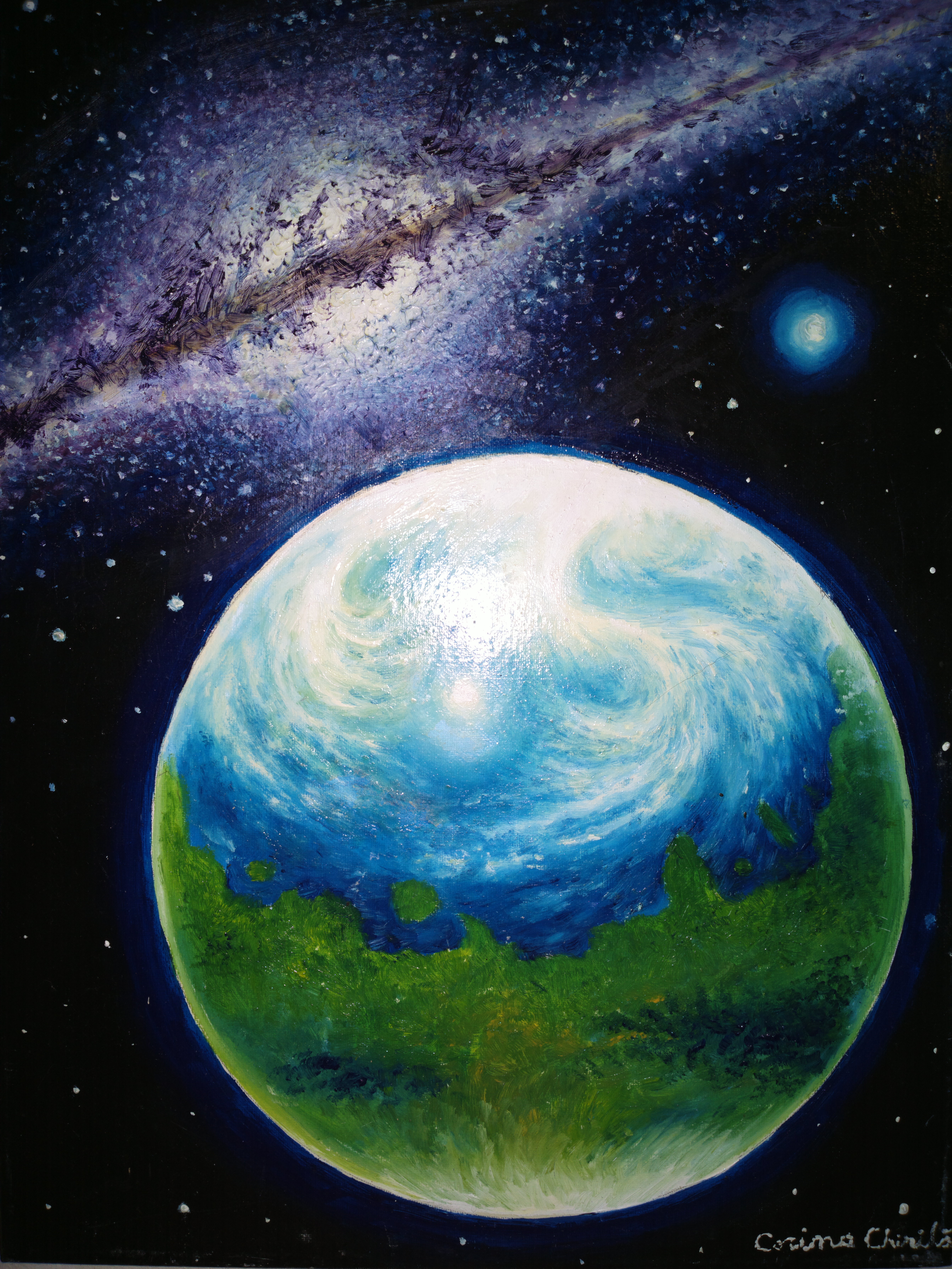
Something destroyed life on Mars and I thing that something was an object made of strange quark matter or an object with a relativistic speed, an object with a strong gravitational field that hit the planet creating the Hellas Platina and the Tharsis Montes.
|
|
